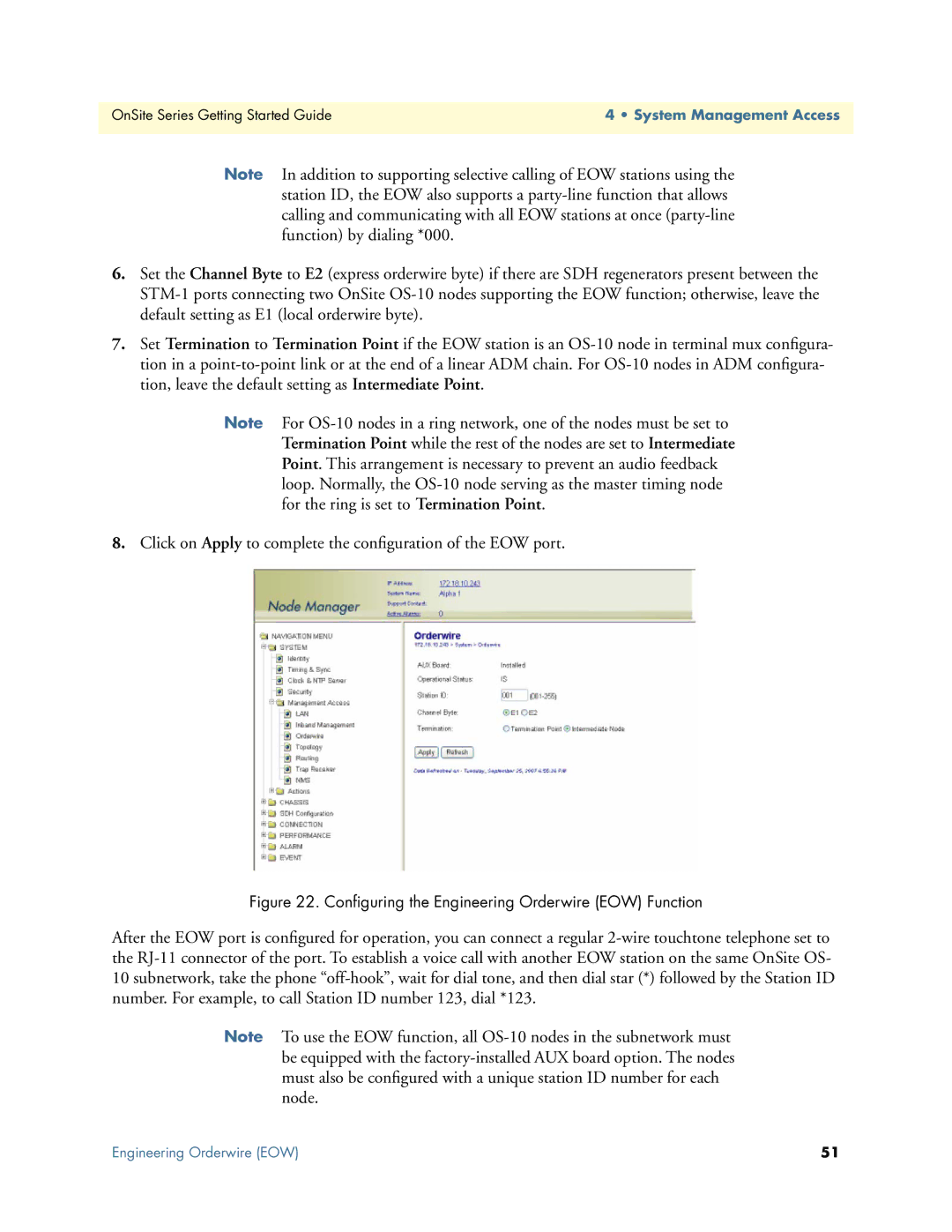OnSite Series Getting Started Guide | 4 • System Management Access |
| |
Note In addition to supporting selective calling of EOW stations using the station ID, the EOW also supports a party-line function that allows calling and communicating with all EOW stations at once (party-line function) by dialing *000.
6.Set the Channel Byte to E2 (express orderwire byte) if there are SDH regenerators present between the STM-1 ports connecting two OnSite OS-10 nodes supporting the EOW function; otherwise, leave the default setting as E1 (local orderwire byte).
7.Set Termination to Termination Point if the EOW station is an OS-10 node in terminal mux configura- tion in a point-to-point link or at the end of a linear ADM chain. For OS-10 nodes in ADM configura- tion, leave the default setting as Intermediate Point.
Note For OS-10 nodes in a ring network, one of the nodes must be set to Termination Point while the rest of the nodes are set to Intermediate Point. This arrangement is necessary to prevent an audio feedback loop. Normally, the OS-10 node serving as the master timing node for the ring is set to Termination Point.
8.Click on Apply to complete the configuration of the EOW port.
Figure 22. Configuring the Engineering Orderwire (EOW) Function
After the EOW port is configured for operation, you can connect a regular 2-wire touchtone telephone set to the RJ-11 connector of the port. To establish a voice call with another EOW station on the same OnSite OS- 10 subnetwork, take the phone “off-hook”, wait for dial tone, and then dial star (*) followed by the Station ID number. For example, to call Station ID number 123, dial *123.
Note To use the EOW function, all OS-10 nodes in the subnetwork must be equipped with the factory-installed AUX board option. The nodes must also be configured with a unique station ID number for each node.

